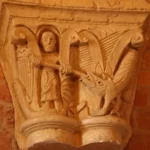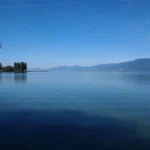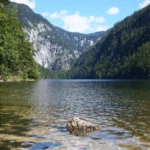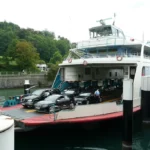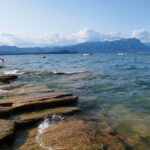Last Updated on 07/10/2023
part we look at what there is to see from the north around Lake Neuchâtel: around the city of Neuchâtel, Lake Biel and Lake Murten.
Lake Neuchâtel is a very decent size, so the reachability of certain attractions will depend on where you have accomodation. For example, for Estavayer, which I talked about in the previous part, all the sights from the east and south will be quite easily accessible, but the mountains on the other side of the lake are rather far away. Although once by car you can also go there.
It can be interesting for you:
Neuchatel Lake. 1. Estavayer
South of Lake Neuchâtel map
Vallorbe Caves
Canton Valais. Sion – castles and bisse canals
Switzerland by car
Region Jungfrau. Map
Basel
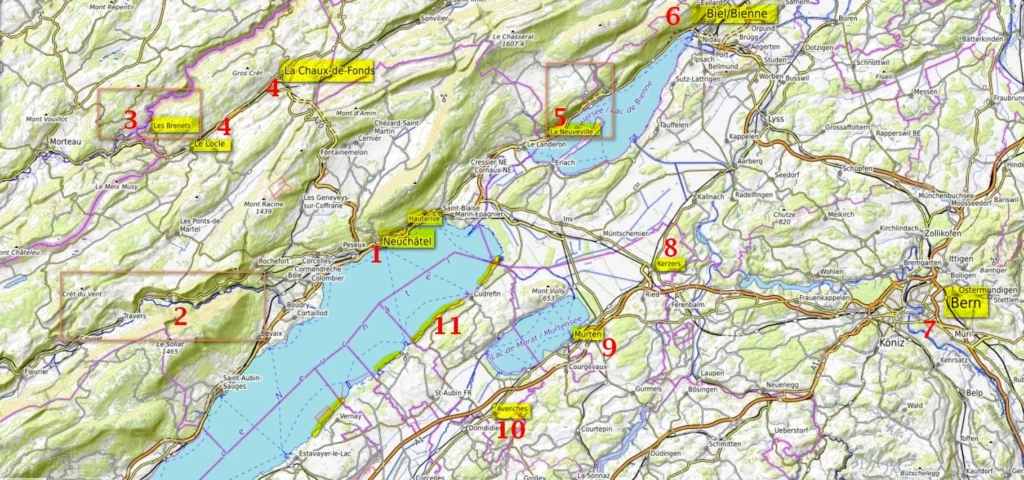
Northern part of Lake Neuchâtel
1. Neuchâtel (Neuenburg)
The city was named Neuchâtel (“new castle”), because one of the Burgundian kings, Rudolf III, presented the “new castle” to his wife at the beginning of the 11th century. From the 13th century the city developed rapidly, in the 16th century it converted to Protestantism.
In the middle of the 17th century, under the Longuevilles (a branch of the Valois), Neuchâtel and the surrounding lands became an independent principality. At the beginning of the 18th century, after the death of Mary of Nemours, the inhabitants of the principality did not accept French heirs and entered into a personal union with Prussia.
The most interesting in the city are the castle, the collegiate church and the market square.
Market square (Place des Halles) is surrounded by 18th century houses. The former covered market (now a restaurant) was built in the 16th century.
Neuchâtel Castle comes from the 12th century. Now the cantonal government is located here, but you can walk along the walls, and in the summer months visit some of the halls of the castle.
Collegiate church – an example of Romanesque architecture, built in the 12th-13th centuries. Inside, special attention should be paid to the choirs and monkey musicians at the organ. Also found in the church was a cenotaph of the counts of Neuchâtel – 15 carved figures from the late 14th century.
There are several museums in Neuchâtel:
ethnographical museum,
Museum of Art and History (which exhibits, among other things, the first humanoid robots of the 18th century).
in the suburb of Hauterive is the Latenium Archaeological Museum. This is the largest archaeological museum in Switzerland with indoor exhibits and reconstructions of the prehistoric and Roman periods in the open area.
Between Neuchâtel and Latenium – funicular in Coudre.
You can get to the funicular and the Latenium Museum from the center of Neuchâtel (Place Pury) or from the train station by bus 107 (you will still need to walk to the museum),
to Latenium (stop at the museum) – also by bus 101.
2. Mountain range around Neuchâtel
Above Lake Neuchâtel rise the slopes of the Jura Mountains, which reach a height of 1700 meters. Here you will find mainly natural attractions: gorges, waterfalls, mountain lakes.
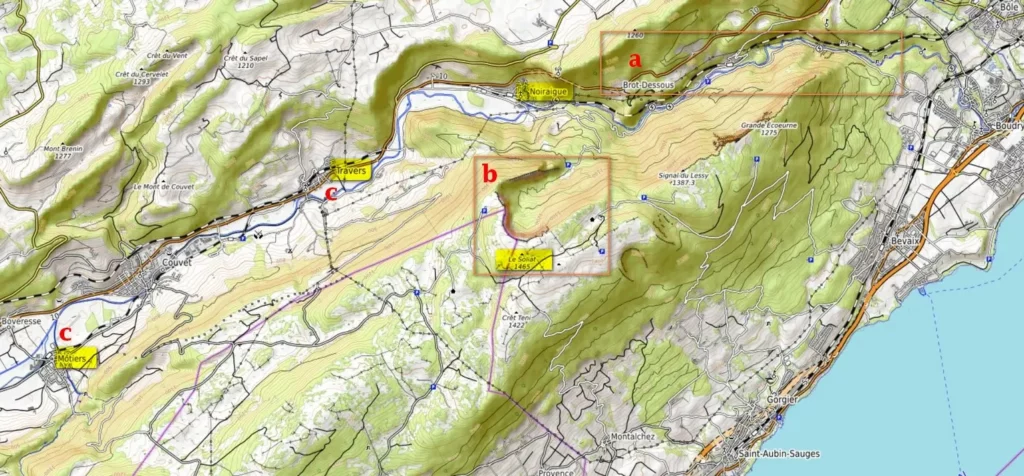
A. Areuse Gorge (Gorges de l’Areuse) – An 11 km scenic walk along the river gorge from Noiraigues railway station to Boudry railway station.
B. Creux du Van – a high level rocky wall standing in a semicircle. It was formed under the influence of a glacier and water.
You can get there by train to Noiraigues, then walk to La Soliat, from there 300 m to the observation point.
By car from the lake (St-Aubin) or from the other side of the ridge (Couvet, Travers) also to La Soliat.
The circular route Noiraigues – Noiraigues takes about 4.30 hours (14 km). There is also a route for e-bikes, which can be rented at many stations, including Noiraigues.
C. The train from Noiraigues goes on through
Travers (asphalt mine),
Motiers (small cascade and another gorge, Rousseau Museum)
in Buttes, where is the chairlift and coaster (La Robella).
Jean-Jacques Rousseau spent three years in Motiers. In this valley, in addition, in the 18th century absinthe production began, so many villages have places where you can taste it (be careful).
3. Les Brenets, waterfall Saut du Doubs
The narrow winding lake Brenets with rocky shores and the large waterfall Saut du Doubs are the main natural attraction of the region.
Boats on the lake go form French side (Villers-le-Lac, www.vedettes-panoramiques.com, www.sautdudoubs.fr) and from Swiss side (Les Brenets, rail station, www.nlb.ch). You can walk to the waterfall (from Les Brenets 50 minutes).
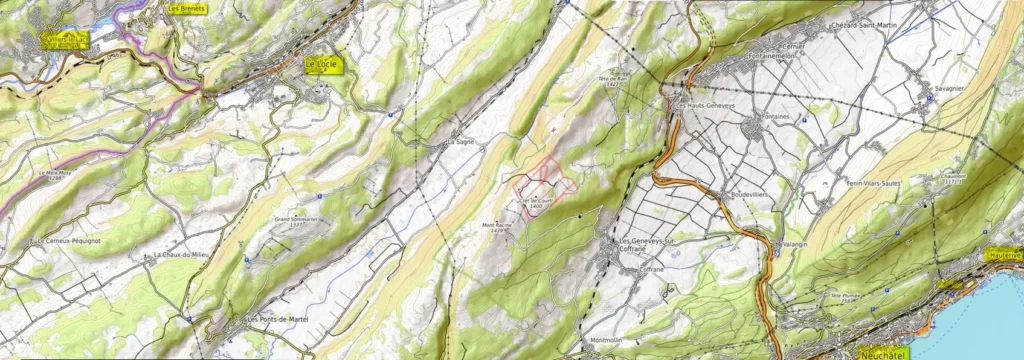
4. Le Locle, La Chaux-de-Fonds
Cities near the lake Le Locle and La Chaux-de-Fonds are centers of the watch industry. They are included in the UNESCO list for their unique urban planning, subordinated to the needs of watchmakers. This is how cities were rebuilt after great fires at the end of the 18th and 19th centuries. Both cities have watchmaking museums.
5. La Neuveville
Old medieval town.
There is a funicular in the nearby village of Ligerz, which can be combined with a walk through the gorge from the village of Twann.
The entire slope is planted with vineyards, which you can walk along overlooking the lake.
6. Biel / Bienne
Large bilingual city on Lake Biel. You can see the old town, the new Swatch watch museum (Cite du Temps), the zoo (Tierpark Biel).
7. Bern
It is difficult to say whether it is worth visiting Bern at all. It’s not a very long walk if you only see the old town and don’t add a zoo, a thermal pool, or a museum. With so many natural attractions, it’s a pity to spend a good day on it. Rather it is possibility for a rainy day in combination with a thermal pool.
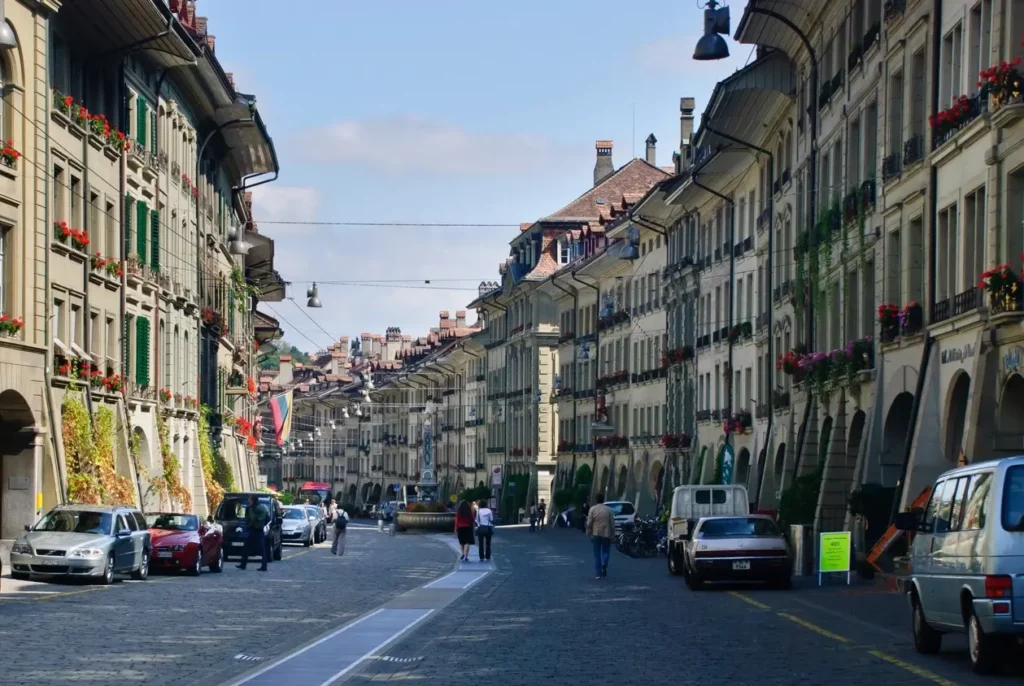
8. Kerzers. Butterfly park
You can get Kerzers with the railway. Butterfly Park has its own station, where trains stop in the summer.
Papilorama Butterfly Park is considered one of the top attractions in the region, but, in my opinion, the price-quality ratio is absolutely not convincing.
The park had Dutch origin, but in Holland it burned down (literally) and moved to Switzerland in 2003. Three large domes accommodate the butterfly pavilion, the pavilion of nocturnal animals, the pavilion of the tropics. In the open area of the park there is a small playground with pets, a playground and a pavilion of local butterflies covered with a net.
The Butterfly Pavilion itself is quite good: in addition to a large number of various butterflies, there are also a few birds, large insects and snakes.
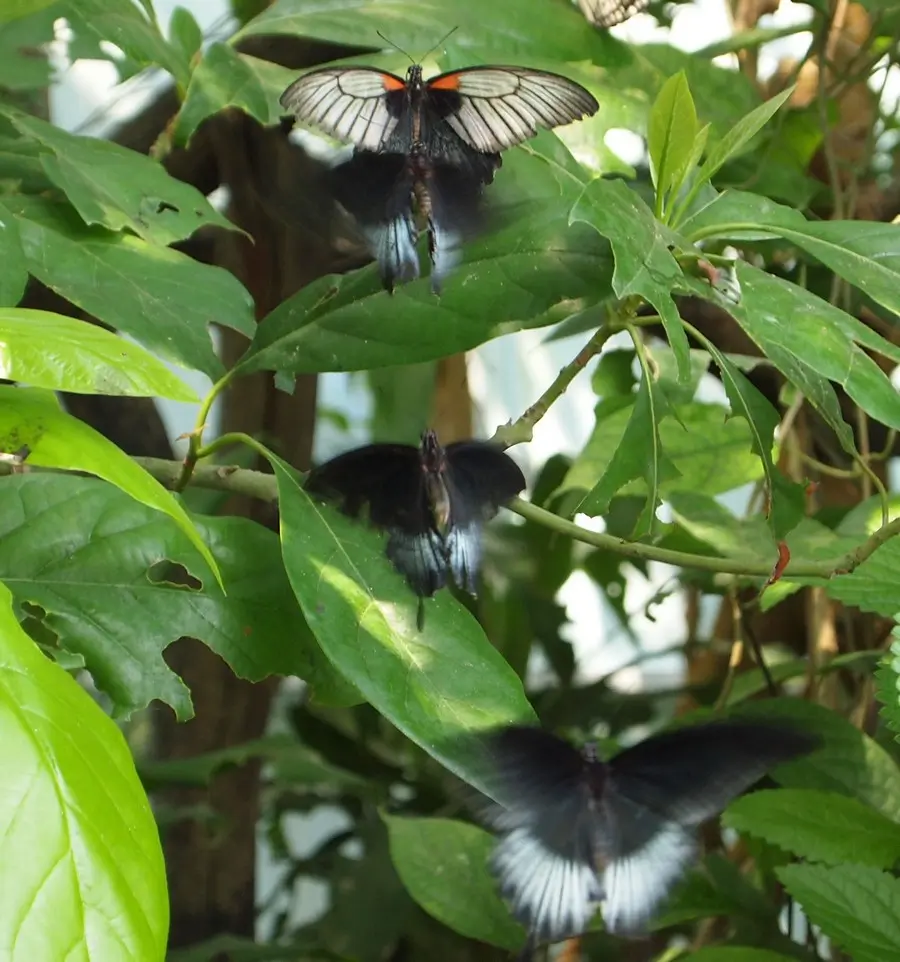
The pavilion of nocturnal animals shows animals at dusk (I wonder if they turn on the lights at night to sleep?): armadillos, rodents, bats, sloths. The smell is unpleasant, it is difficult to stay in the pavilion for a long time. At the same time, it is necessary to stay for a long time in order to at least be able to see something. That is, theoretically it is interesting, in practice almost nothing is visible.
The Tropical Pavilion shows some (small) number of tropical animals and birds, some birds fly freely.

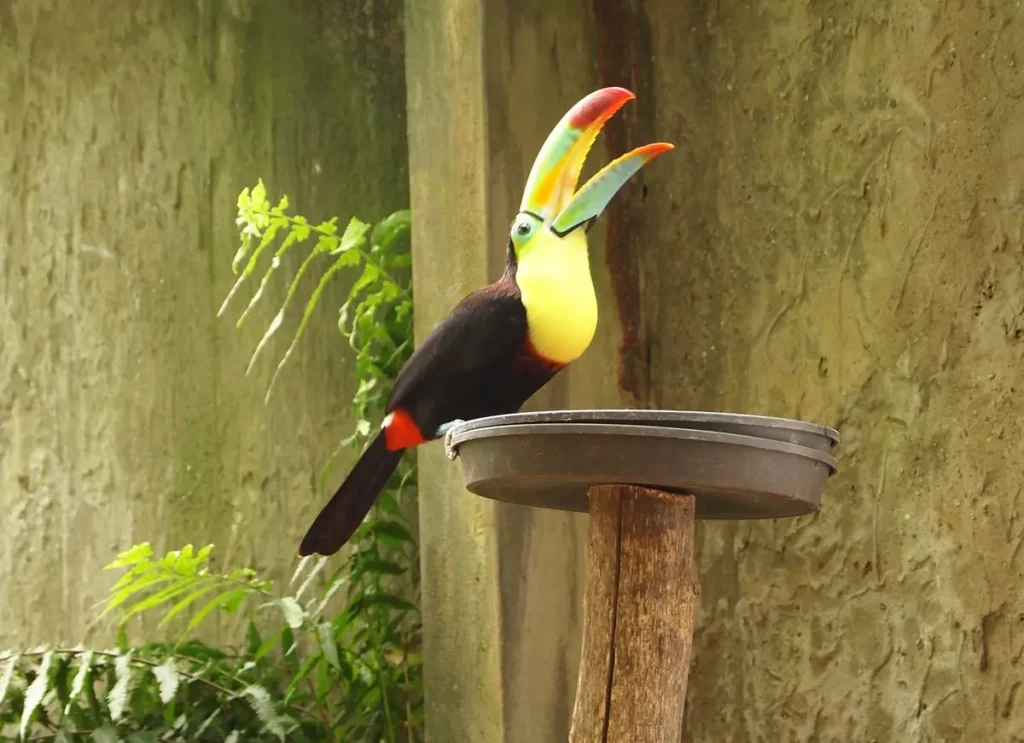
The pavilion of local butterflies is also not bad, but the area around was very overgrown with nettles, the playground was in a rather abandoned state. The general impression was that the park is going through hard times.
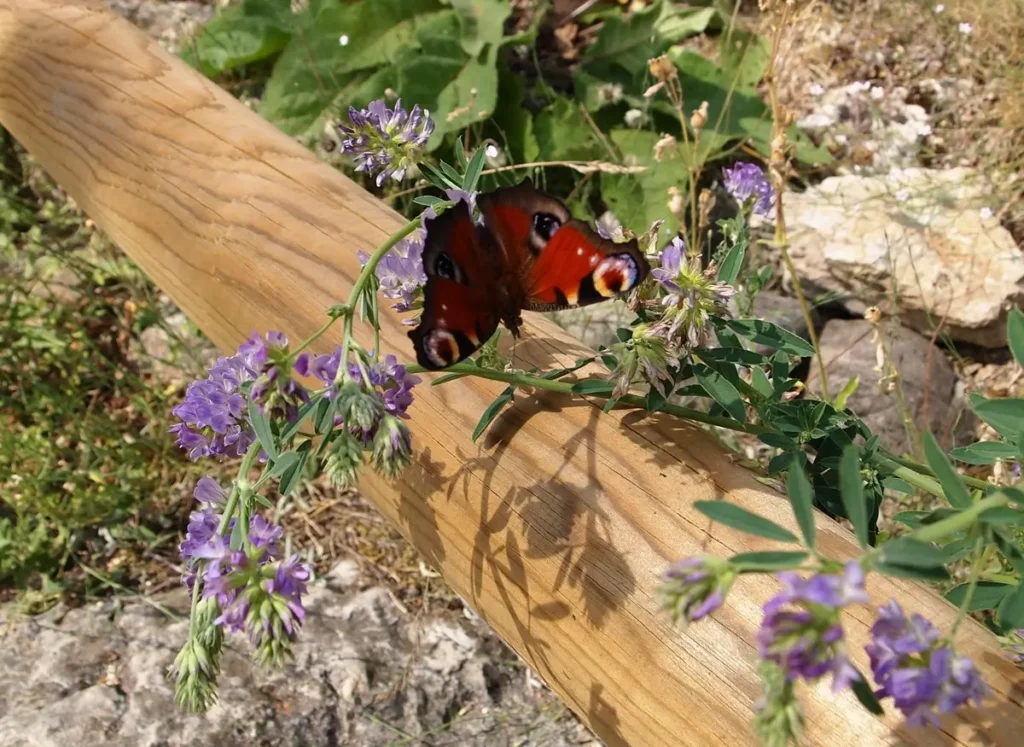
Follow me
In my opinion (remembering German parks and zoos, such as Wilhelm in Stuttgart or the island of Mainau, where for less money the whole family can spend a whole day, not two hours, and get a lot of impressions), for such a price, a visit can be missed. Especially outrageous seemed 4 francs for a completely wild parking on gravel in the sun.
9. Murten (Morat)
Murten can be reached by train or by ship from Neuchâtel.
The city was founded in 1157 by the Duke of Burgundy Zähringen (Swabian dynasty from Breisgau). In the 13th century it passed into the power of the Savoy dynasty. From the 15th to the 18th century the city was governed by Bern and Fribourg in turn (every five years). Napoleon transferred the city under the control of Friborg against the will of the inhabitants, among whom from the 17th century German speakers began to predominate. Murten remained in predominantly French-speaking Fribourg, maintaining a German/French ratio of 75 to 17.
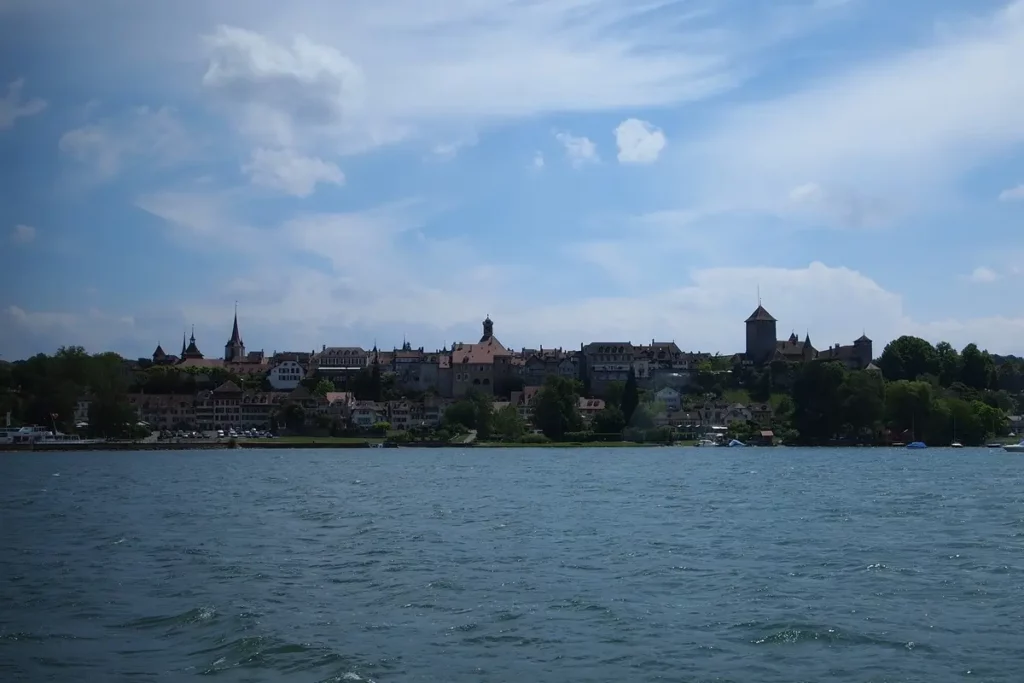
The city has a typical structure for cities founded by the Zähringen dynasty: three long streets with a narrow lane in the center.
You can take about one and a half to two hours to explore the city.


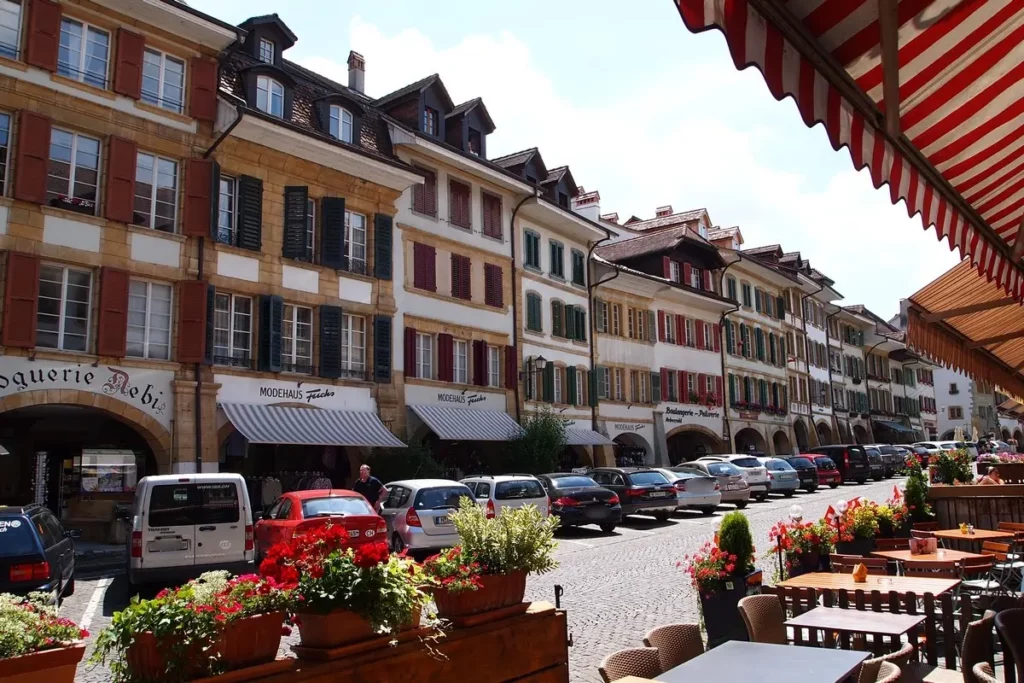
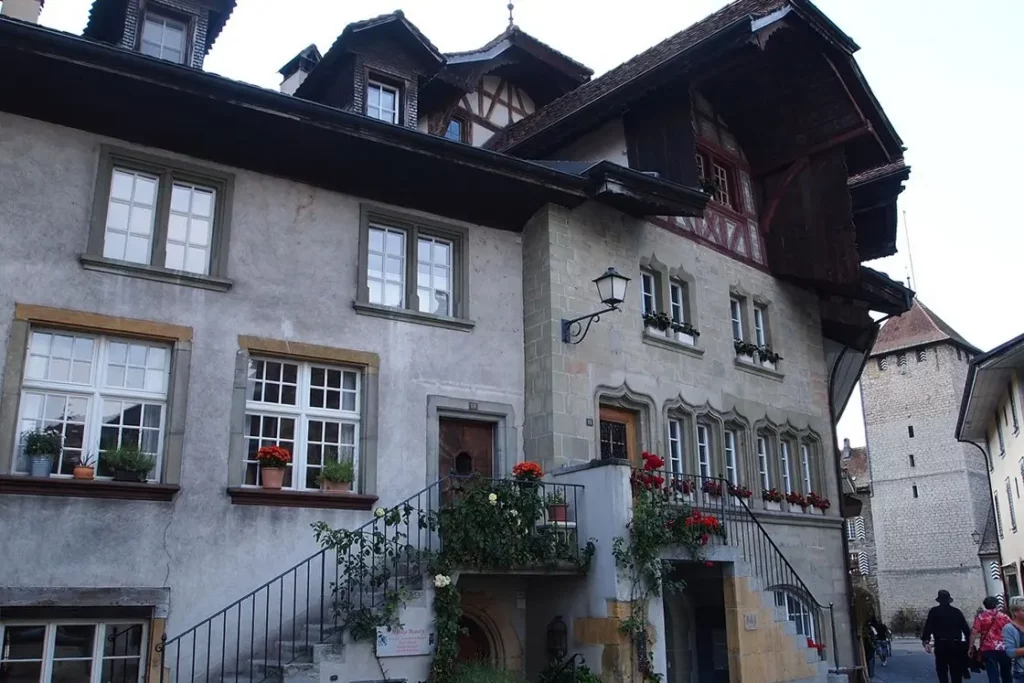

The city walls (12-15 centuries) are the best preserved, you can walk along them.
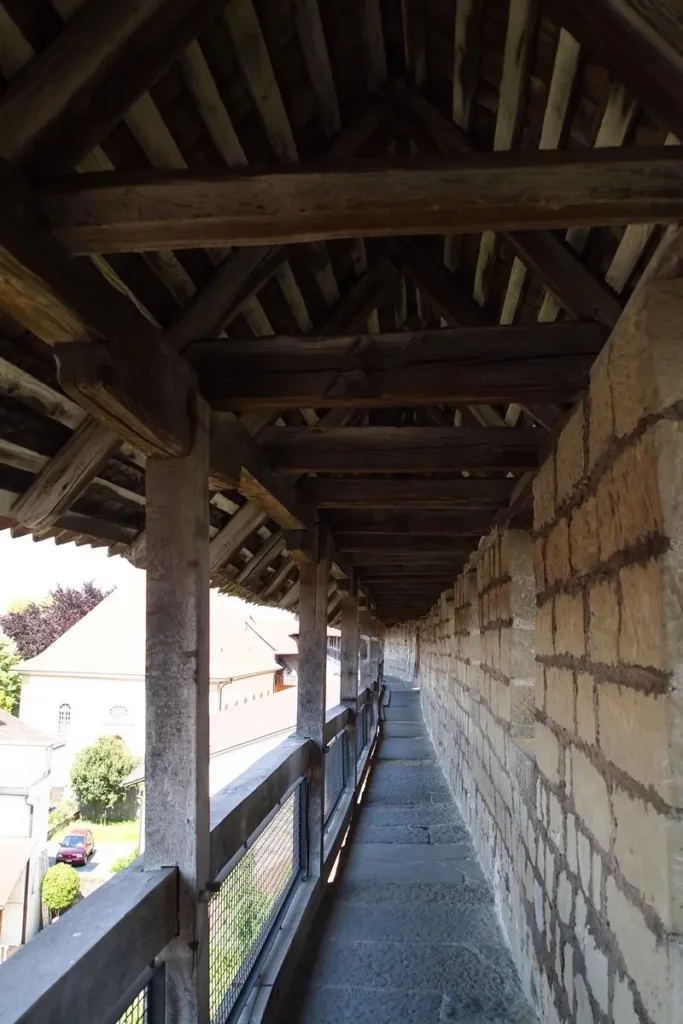



The buildings of the central street with arcades date back to the 17th-18th centuries, at the same time the castle, the town hall and the German church were rebuilt.
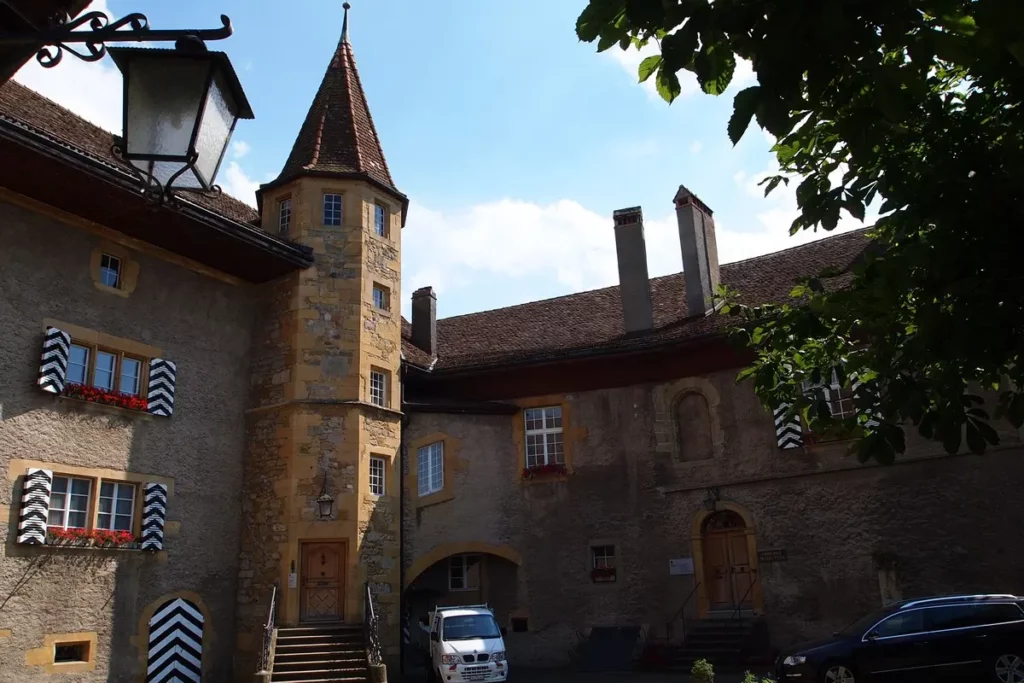
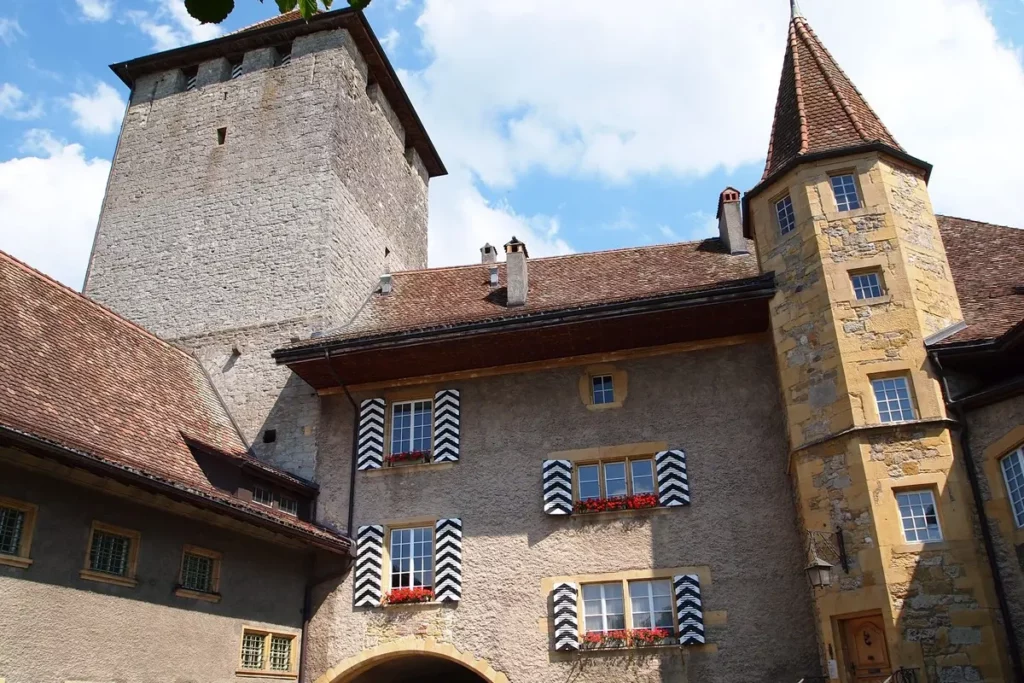
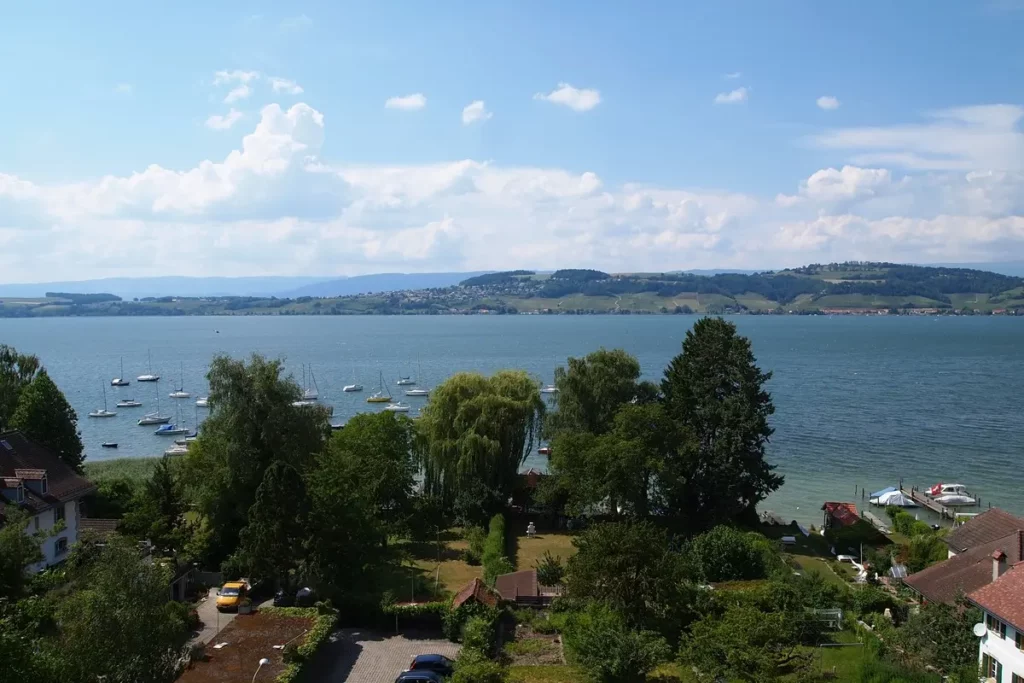
10. Avenches
Avenches can be reached by train.
Avanches was once a very large Roman settlement (20 thousand inhabitants!), the capital of the Roman province of Helvetia. Since the 6th century, when the archbishop left the city, moving to Lausanne, it lost its influence.
From the Romans, the ruins of the theater and the amphitheater, the terms and the temple, the city wall have been preserved. In the tower, built near the amphitheater in the 12th century, there is a Roman museum, the most important exhibit of which is the golden bust of Marcus Aurelius.
The medieval city was built on the outskirts of the former Roman settlement in the 11th century. There is also something to see here: a medieval castle, an 11th century church, a town hall, medieval walls.
11. Reserve Grand Caricaie
The reserve stretches along the entire eastern coast. There are two information points: La Sauge in the northern part and Champ-Pittet in the southern part. The second one can be reached by train, the easiest way to the first one is by steamboat from Murten (it runs very rarely).
Lake Neuchatel (Lac Neuchâtel ). Estavayer
Lake Neuchâtel. What to see around: Yverdon, Vallorbe, Gruyeres
Bern Sightseeing
#French part of Switzerland
#bern region
Do you enjoy the site without cookies? This means that I work for you at my own expense.
Perhaps you would like to support my work here.
Or change your cookie settings here. I don’t use personalized ads

